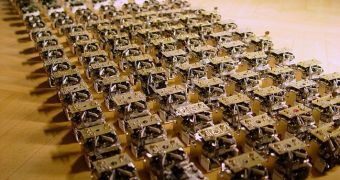The US Defense Advanced Research Projects Agency (DARPA) recently announced plans to support the development of a new type of intelligent video cameras that are to be used on robotic devices. The agency says that these instruments could be used to give robots a sense of perception, which should help them make better sense of their surroundings. At this point, this is achieved through complex algorithms, but the machines are still unable to create “mental maps” of their environment, and to remember places they've been to before, LiveScience reports.
The project is still in its planning stages, DARPA announces, in the sense that no active experiments or developers have yet been attached to it. In order to get it off the ground, the institution is set to organize an industry day in Washington DC, on April 20. At the meeting, companies and research centers interested in working on developing the smart camera will be presented with all the details of the plans, and representatives from the agency hope to receive a lot of interest for their proposal, and maybe even some firm commitments.
“[The] Mind’s Eye program seeks to develop in machines a capability that currently exists only in animals: visual intelligence,” the official DARPA statement reads. What this basically means is that the new system is envisioned as capable of determining the underlying reasons for the actions it sees. When we look at a dog walking, for example, we do not only observe the dog, but a myriad of other data as well, such as its body conformation, why it can't run on only two feet, its top speed, its limitations and advantages and so on. Imbuing robots with systems capable of achieving the same level of performance is an incredibly-difficult task, and one that is likely to take many years to develop.
In tune with its specialty, DARPA envisions using the new system for improving the observations capabilities on existing unmanned aerial vehicles (UAV). These machines fly above Iraq and Afghanistan, keeping an eye on things, and determining risk zones. If the system could become able to infer when an individual is planting a bomb, and when he or she is simply carrying out a routine action, then the number of casualties associated with these wars could be significantly reduced. The system could also be used on unmanned ground vehicles (UGV) as well. This could come in handy as these machines work to defuse bombs.

 14 DAY TRIAL //
14 DAY TRIAL //